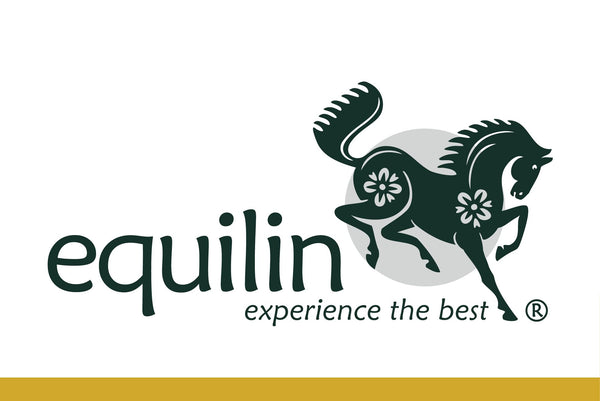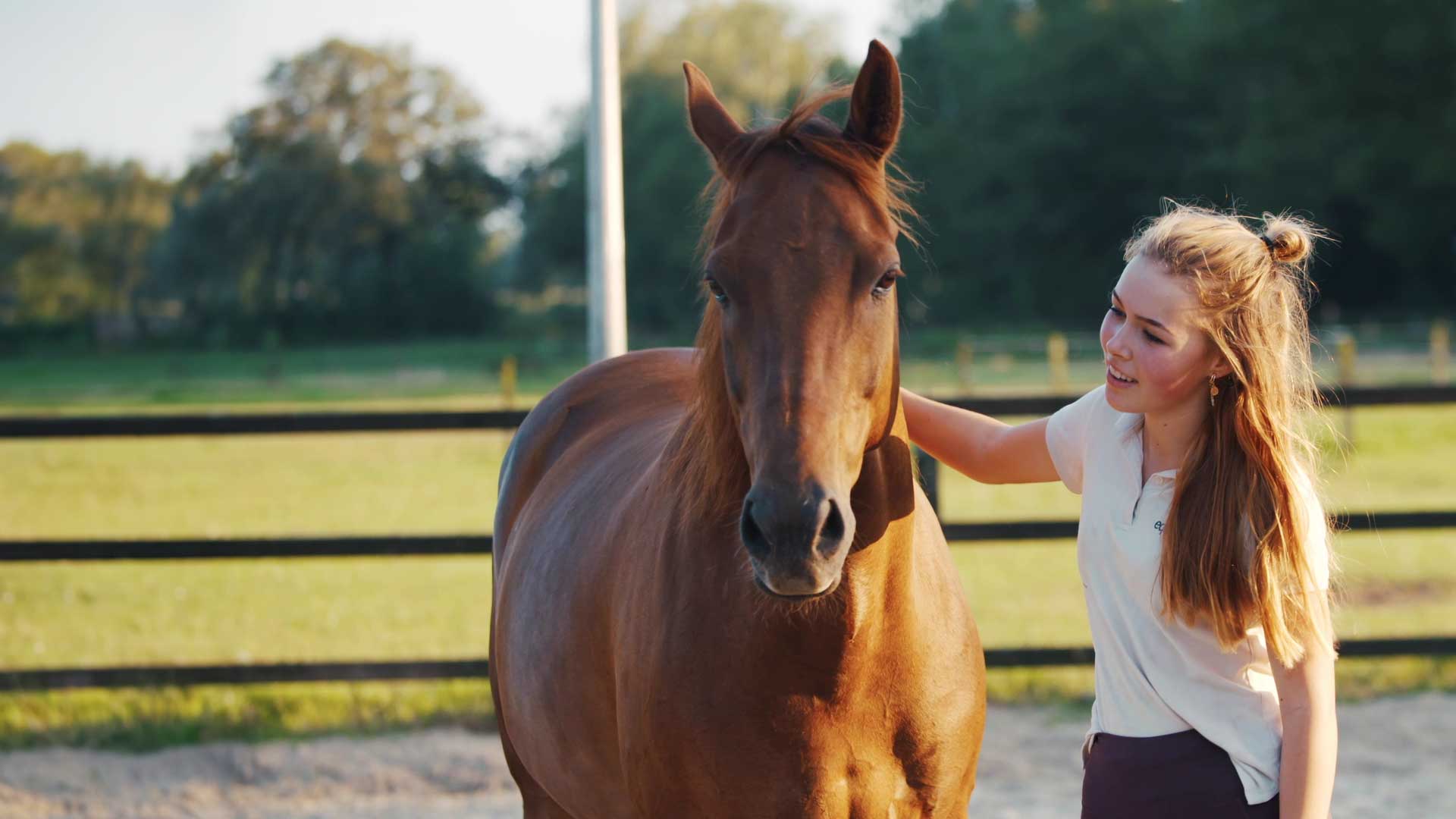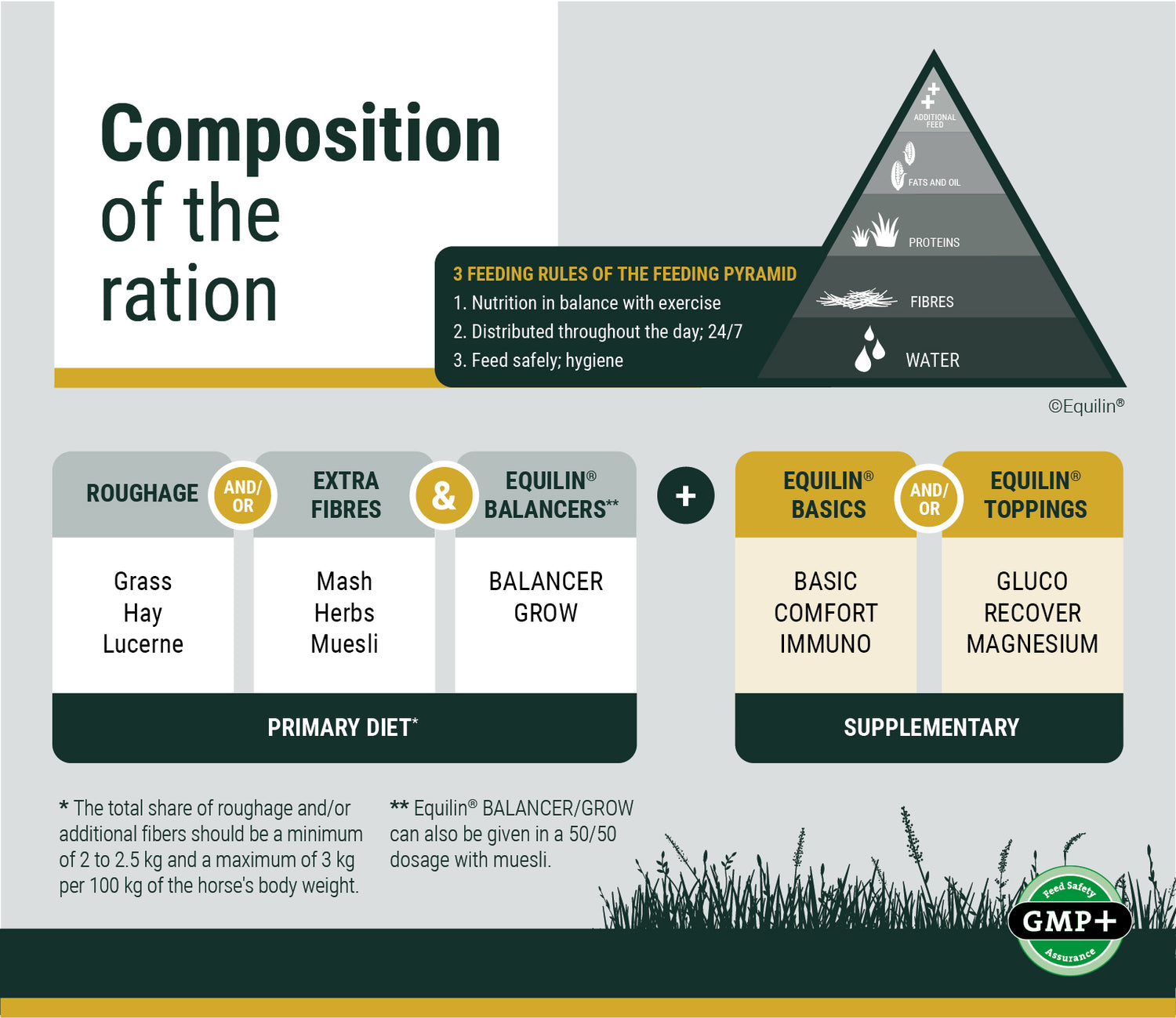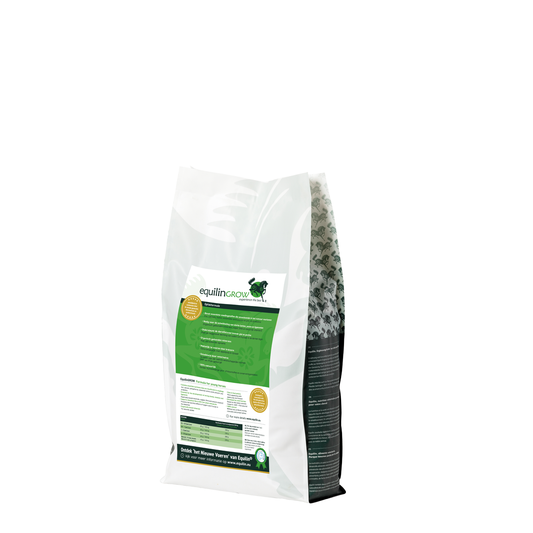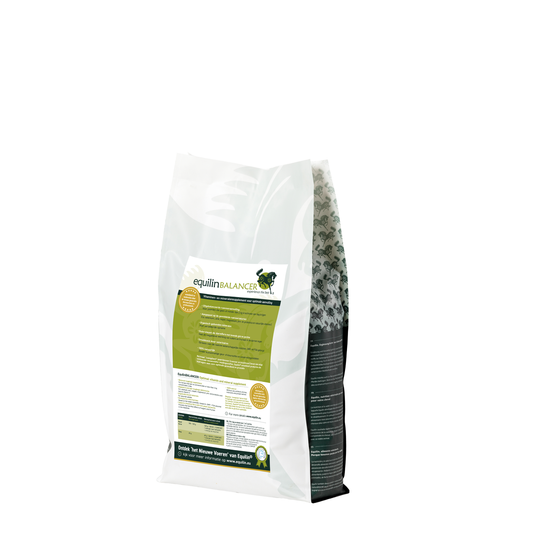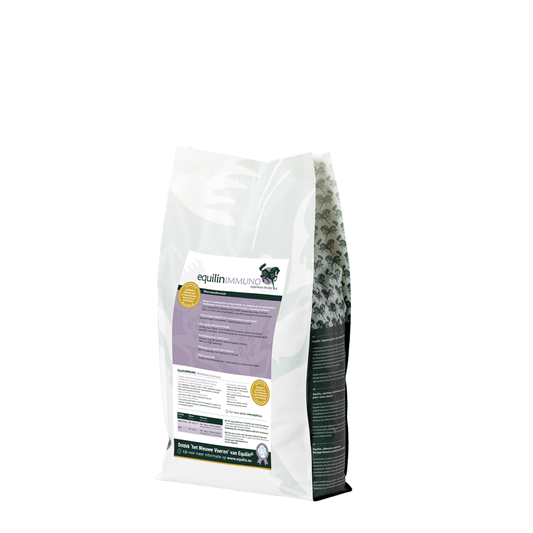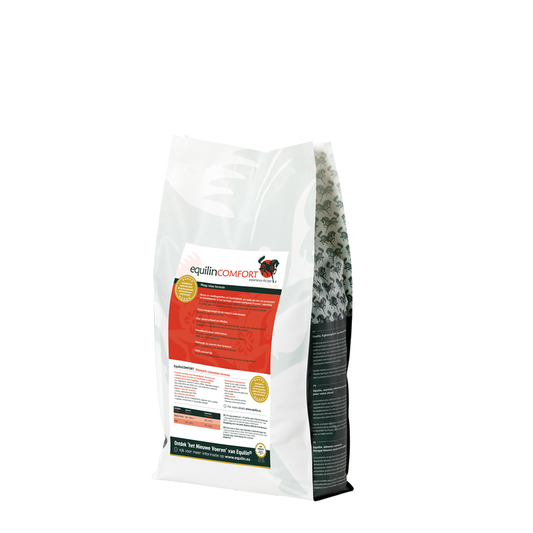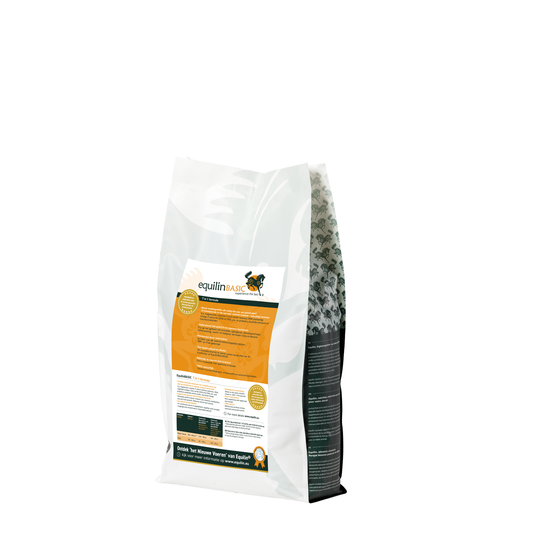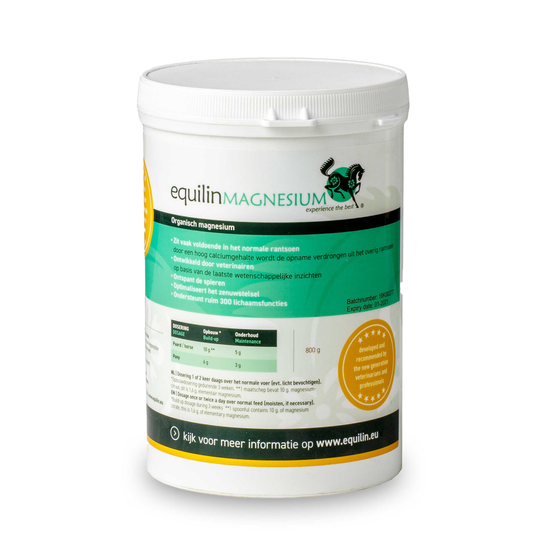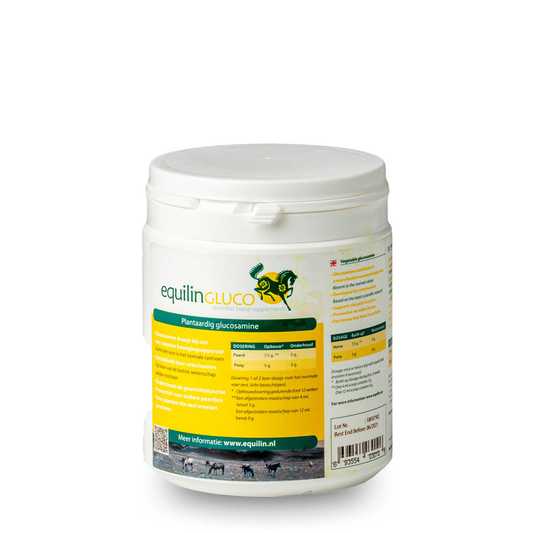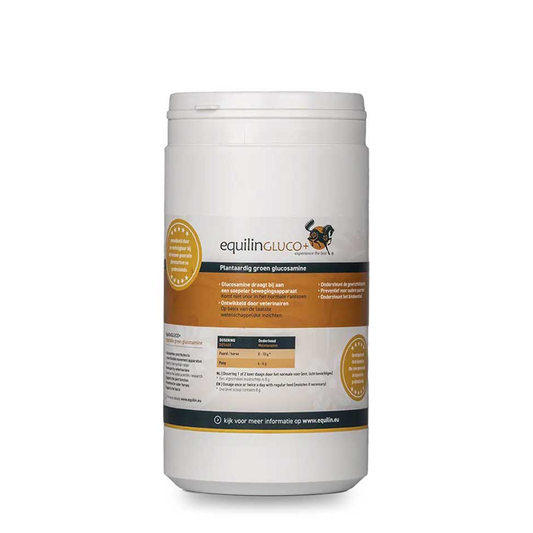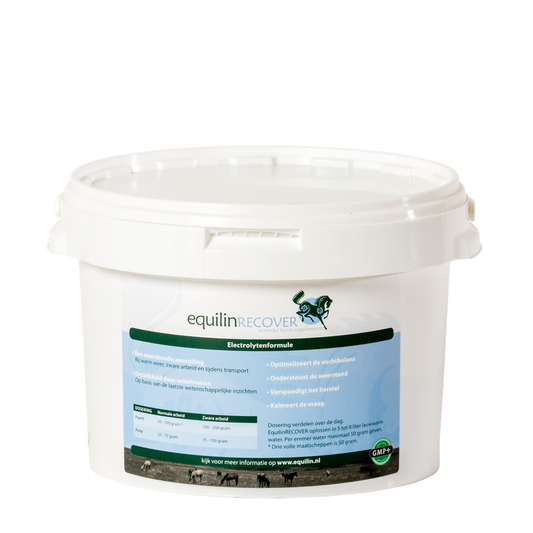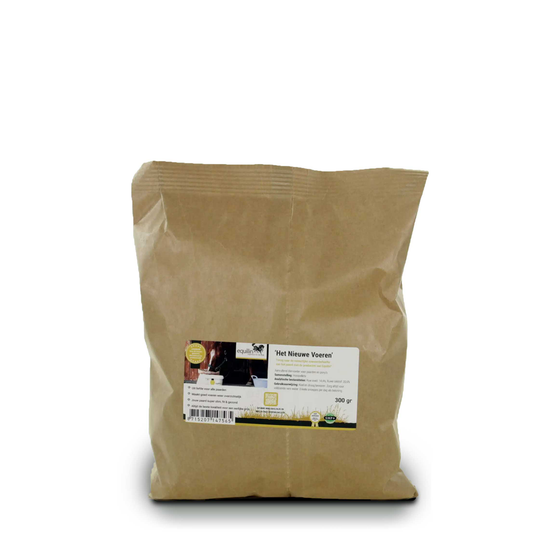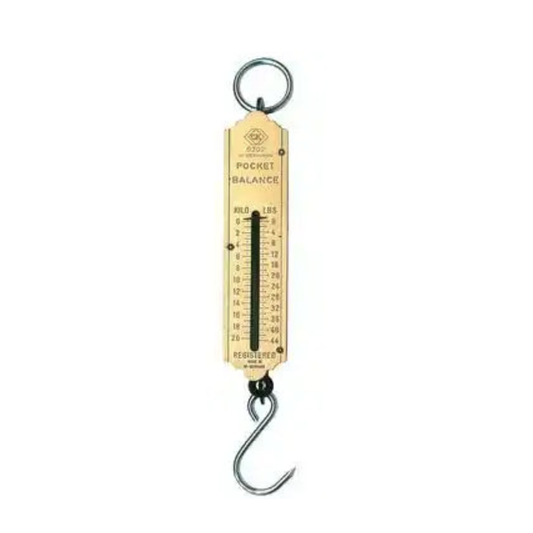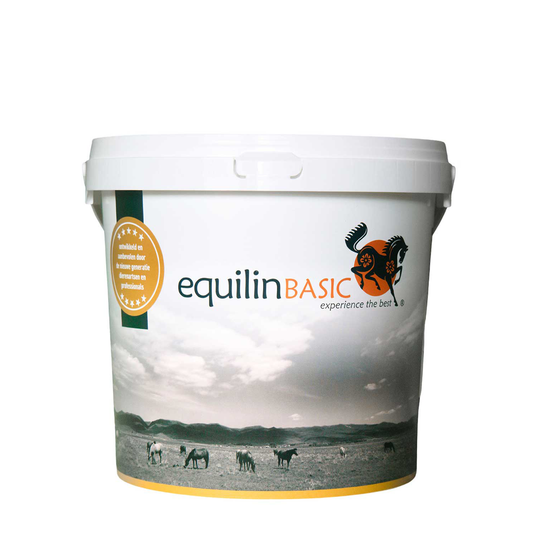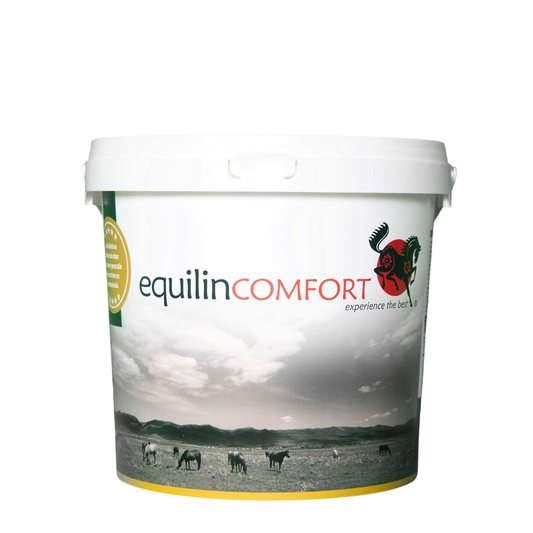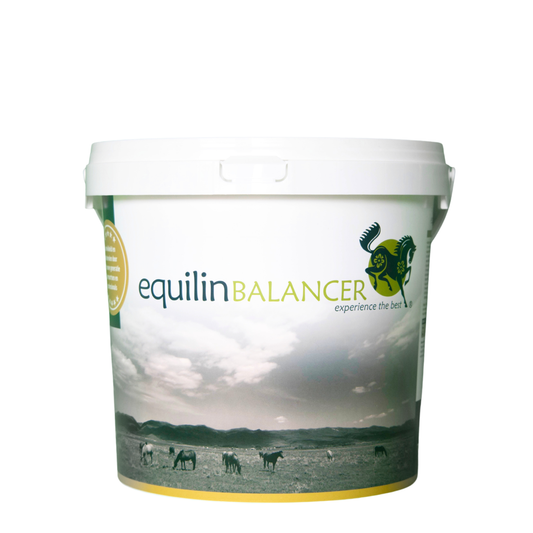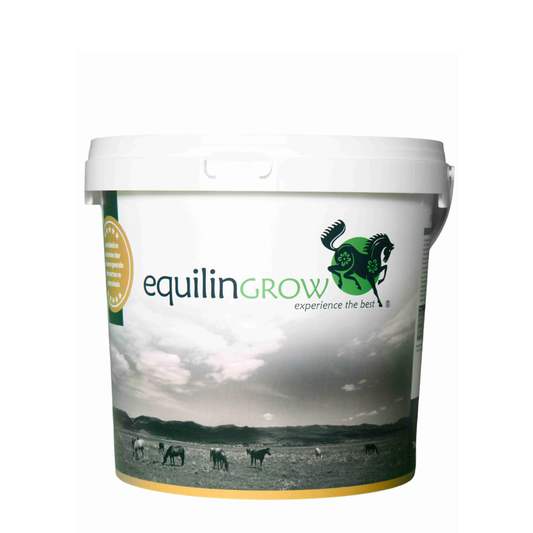Het paard moet echt wennen aan de smaak. Soms laat hij het staan en meng ik het met muesli
Dat klopt, sommige paarden hebben meer moeite met de hoge concentratie van de voedingstoffen dan anderen. Na smaakgewenning eet zo´n 80% van de paarden het probleemloos, bij andere paarden zal je altijd wat bij moeten mengen. maar als je 6 supplementen los geeft, eten ze dat ook niet los en zal je er ook iets bij moeten doen.
De gezondheid van mijn paarden blijft stabiel
Voer bevat alles wat onze paarden nodig hebben. Geen extra kosten meer aan dure supplementen. Paarden zien er fantastisch uit!
Paard vindt het niet lekker en eet het helaas slecht
Hallo Marjolein, vervelend dat je paard de basic niet goed wil eten. Smaak blijft altijd een puzzel, omdat het hooggeconcentreerde brokjes zijn met voedingstoffen die wel zinvol zijn maar niet altijd lekker... Wij zijn erg terughoudend te zijn met bijmengen van smaakverleiders die vaak suikers bevatten zodat eigenaren zelf iets meer kunnen bijmengen met ander voer / slobber bij die paarden die wel moeite hebben met de smaak. Onze ervaring is wel dat de meeste paarden er wel aan wennen en het steeds makkelijker gaan eten na verloop van tijd.
